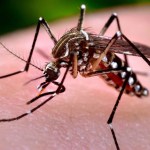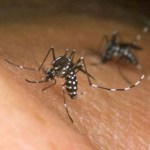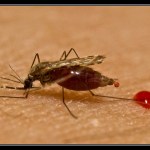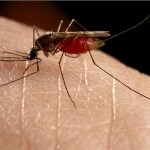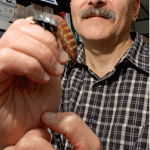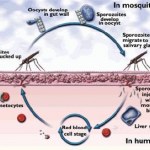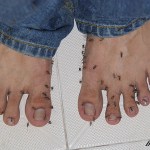mosquito
Last week, I wrote about how conspiracy theories have been flowing fast and furious about the Zika virus and microcephaly. Even if you didn't see that post (perhaps instead having seen this one), you've probably seen the news reports describing how last fall the observation of a large number of cases of microcephaly, characterized by an abnormally small head and delayed brain development, in Brazil led researchers investigating the problem to suspect a link to a virus. That virus, the Zika virus, as you recall, is a mosquito-borne flavivirus related to dengue virus and transmitted primarily…
It's an oft-stated cliche that our children our our future. That's the reason stories involving dire threats to children are considered so terrifying. It's why, for instance, Arthur C. Clarke's Childhood's End resonated so creepily. After all, as part of the end of civilization, a frightening change came over the children, who became far superior in abilities and mental power to their parents. Another example includes Greg Bear's Darwin's Radio, whose plot involves the human race being plagued by a new disease called "Herod's Flu," which causes pregnant women to spontaneously abort their…
Image of mosquito from http://bloodinurineandpainofca.wordpress.com/
Until now I thought I had come up with enough reasons to dislike mosquitoes, those tiny little blood sucking vectors of disease. With reports of the debilitating mosquito-borne virus chikungunya in the Americas (Carribean), I was ecstatic hear that researchers are working hard to find ways to control mosquito populations. As mentioned in a previous blog, only the females bite to obtain nourishment for developing eggs. According to the study authors, the female mosquito can double her own body weight after just one meal,…
Additional highlights from the Comparative Physiology posters presented at the 2014 Experimental Biology conference in San Diego, CA:
TA White, G Evans, GC Verzosa, T Pirtskhalava, T Tchkonia, JD Miller, JL Kirkland, and NK LeBrasseur. "Aging and cellular senescence and disease: The influence of diet and exercise"
Not surprisingly, mice consuming a fast food diet for 5 months gain weight, have impaired glucose tolerance, and blood pressure problems. If they are given a running wheel to use voluntarily, the effects on weight and cardiac function can be prevented. In addition, markers of…
"If you think you're too small to have an impact, try going to bed with a mosquito." -Anita Roddick
There's a lot to enjoy when it's warm and tropical, which it is many places this time of year. The flowers are out, the Sun often shines, and there's no shortage of spectacular music. Have a listen to to West Virginia-based band The Recipe, as they rock out (and give a shout-out to Neil Armstrong's moonwalk) in their great song,
Whiskey Pickle.
But there's an unwelcome visitor that comes along with this kind of weather: the mosquito.
Image credit: public domain image; source unknown.
Some…
Entomologist Dr. Coby Schal at North Carolina State University studies the chemicals involved in insect communication in an effort to more effectively manage pests. His big interest is in chemical communication using pheromones and how they impact mating and other behaviors. His research has aided the control of cockroaches, bed bugs, mosquitoes and other nuisance bugs in major cities.
A very nice biography of his work was recently published in The Scientist. Some major discoveries that Dr. Schal made as a graduate student included observing that male cockroaches sit higher up in foliage in…
Life cycle of the malaria parasite. Image Source: Stanford University
Researchers, Jacobs-Lorena et al., at the Johns Hopkins Bloomberg School of Public Health have altered a harmless bacteria (Pantoea agglomerans) naturally found in the midgut of mosquitos to fight malaria by producing and releasing proteins that are toxic to malaria but harmless to mosquitos or humans. Since the gut is where the malaria parasite reproduces, this is the optimal location to put an end to it. The engineered bacteria were indeed successful at reducing the number of malaria oocysts by 98% in mosquitos with the…
by Kim Krisberg
A couple weeks ago on the southern-most tip of the continental United States in Key West, nearly 70 residents gathered at a town hall meeting to talk about mosquitoes. And not just any mosquito. A special, genetically modified mosquito designed to protect people's health.
While the modified mosquito has yet to make the two-mile wide island its home, local mosquito control officials are busy making the case that its intentional release will help safely contain the risk of mosquito-borne dengue fever, which made a startling reappearance in Key West in 2009. The male mosquito is…
As good news surfaces regarding a new (well, old) potential drug to help combat malaria--a drug already used to treat river blindness--KeithB and Phil Scheibel alerted me to another old malaria fighter featuring Dopey, Sneezy, and the whole gang:
Other Disney disease-fighting videos include Water, Friend or Enemy, Insects as Carriers of Disease and Hookworm. A list of other wartime shorts is here.
The anopheles mosquito, Anopheles gambiae, is the primary vector for human malaria. Mosquitoes in general, the A. gambiae included, find their prey by tracking body odor exuded from the breath and skin. Apparently, the composition of body odor determines A. gambiae's preference for one individual over another. It has been known for some time now that A. gambiae preferentially seek out and draw blood from pregnant women (Linsay et al 2000; Ansell et al 2002; Himeidan, Elbashir and Adam 2004), preferring pregnant over none pregnant women at about a 2:1 ratio.
Researchers working in Burkina…
The Wall Street Journal reported last week that scientists have finally taken my advice and designed a ruthless mosquito-killing laser that could never ever malfunction and target human children by mistake. Former Lawrence Livermore Science Laboratory researchers have created a laser that aims only at female mosquitoes, using parts that they bought on Ebay (not kidding).
Hey, Dr. Strangelove. A little help here?
Lowell Wood, an astrophysicist, is the main force behind the mosquito laser. He was well known for his work on the "Star Wars" defense program of the...
...80's that sought to…
The mosquito Aedes aegypti sucks the blood of people from all over the tropics, and exchanges it for the virus that causes dengue fever - a disease that afflicts 40 million people every year. The mosquito has proven to be a tough adversary and efforts to drive it from urban settings have generally failed in the long-term. So how do you fight such an accomplished parasite? Simple - use a better parasite. In fact, try the most successful one in the world, a bacterium called Wolbachia.
Wolbachia's success rests on two traits. First, it targets the most diverse group of animals on the planet,…
Do mosquitoes get the mumps? Part V. A general method for finding interesting things in GenBank
This is the last in a five part series on an unexpected discovery of a paramyxovirus in mosquitoes and a general method for finding other interesting things.
In this last part, I discuss a general method for finding novel things in GenBank and how this kind of project could be a good sort of discovery, inquiry-based project for biology, microbiology, or bioinformatics students.
I. The back story from the genome record
II. What do the mumps proteins do? And how do we find out?
III.…
Part IV. Assembling the details and making the case for a novel paramyxovirus
This is the fourth in a five part series on an unexpected discovery of a paramyxovirus in a mosquito. In this part, we take a look at all the evidence we can find and try to figure out how a gene from a virus came to be part of the Aedes aegypti genome.
image from the Public Health Library
I. The back story from the genome record
II. What do the mumps proteins do? And how do we find out?
III. Serendipity strikes when we Blink.
IV. Assembling the details of the case for a novel mosquito paramyxovirus
V. A…
Part III. Serendipity strikes when we Blink
In which we find an unexpected result when we Blink while looking at the mumps polymerase.
This is the third in a five part series on an unexpected discovery of a paramyxovirus in mosquitoes. And yes, this is where the discovery happens.
I. The back story from the genome record
II. What do the mumps proteins do? And how do we find out?
III. Serendipity strikes when we Blink.
IV. Assembling the details of the case for a mosquito paramyxovirus
V. A general method for finding interesting things in GenBank
To paraphrase Louis Pasteur,…
Part II. What do mumps proteins do? And how do we find out?
This is the second in a five part series on an unexpected discovery of a paramyxovirus in mosquitoes, and a general method for finding interesting things.
I. The back story from the genome record
II. What do the mumps proteins do? And how do we find out?
III. Serendipity strikes when we Blink.
IV. Assembling the details of the case for a mosquito paramyxovirus
V. A general method for finding interesting things in GenBank
In Part I, we looked at the NCBI SeqViewer, and found a new way to check out a genome map, and learn more…
Part I. The back story from the genome record
Together, these five posts describe the discovery of a novel paramyxovirus in the Aedes aegyptii genome and a new method for finding interesting anomalies in GenBank.
I. The back story from the genome record
II. What do the mumps proteins do? And how do we find out?
III. Serendipity strikes when we Blink.
IV. Assembling the details of the case for a mosquito paramyxovirus
V. A general method for finding interesting things in GenBank
I began this series on mumps intending to write about immunology and how vaccines work to stimulate the immune…
tags: the world's most deadly animal, streaming video
Do you know what the world's most deadly animal (for humans) is? The grizzly bear? Or wolves? Or maybe the humble hippopotamus? There is a streaming video below the fold that answers this question. [1:58]
The females of most mosquito species suck blood (hematophagy) from warm-blooded animals. This has made mosquitoes one of the most deadly vectors known to man, killing millions of people over thousands of years and continuing to kill millions per year through the spread of diseases.
